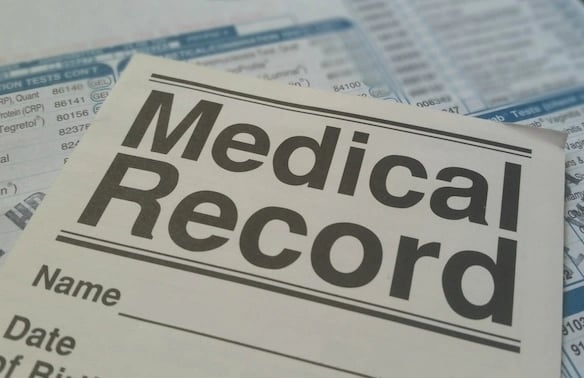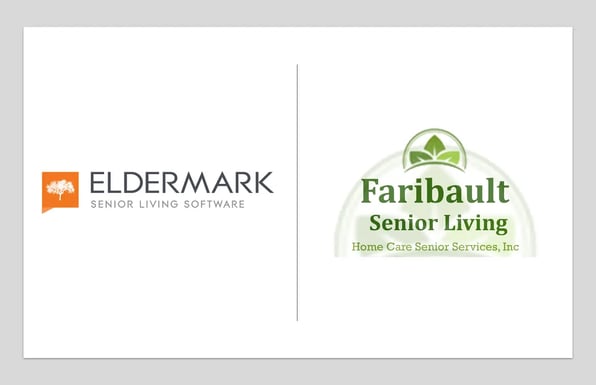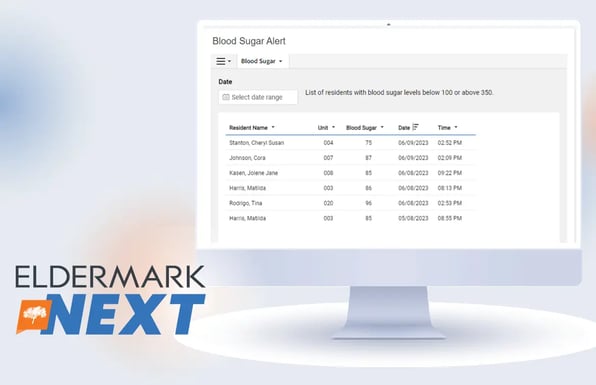A History of EHR: How It Has Changed the Assisted Living Industry

Electronic health records (EHRs) have revolutionized record keeping in the senior living industry. Long gone are the days of rummaging for handwritten paper records and trying to squeeze one more filing cabinet into a cramped office. Now, professional caregivers can access all the clinical information they need on a laptop or tablet.
People often assume that EHRs are a relatively recent invention. However, healthcare organizations have digitized medical records for decades, though this technology wasn’t widely adopted until the twenty-first century. This article provides a brief history of EHRs and explores contemporary trends that are reshaping this essential technology.
When Were EHRs Introduced?
In the early twentieth century, healthcare providers began to create paper-based medical records. They typically stored these records in folders stashed in filing cabinets or boxes. Many providers only created one version of each record, which could easily get misplaced or destroyed by a spilled cup of coffee.
As technology advanced in the mid-twentieth century, though, healthcare organizations began to experiment with computer-based systems for medical records. In the 1960s, Lockheed developed Eclipsys, one of the earliest EHR systems. This innovative tool allowed multiple users to access the system simultaneously long before the invention of the modern cloud.
During the same period, the Massachusetts General Hospital and Harvard University collaborated to create the Computer-Stored Ambulatory Record (COSTAR). This digital medical record system featured a flexible vocabulary and increased efficiency by compartmentalizing billing and health information.
Medical services have evolved rapidly since the 1960s, but Eclipsys and COSTAR remain in use today. These tools paved the way for the gradual adoption of electronic medical records (EMRs) in the American healthcare industry.
When Did EHR Become Mandatory?
The federal government hasn’t mandated the use of EHR in assisted living communities and other healthcare organizations. However, several laws encourage EHR adoption, including the:
- American Recovery and Reinvestment Act of 2009 (ARRA): This federal act aimed to revitalize the American economy and promote access to affordable healthcare. ARRA allows eligible professionals and hospitals to receive incentive payments if they adopt Certified Electronic Health Record Technology.
- Health Information Technology for Economic Clinical Health Act (HITECH): This act is part of ARRA. It requires the Centers for Medicare and Medicaid Services to offer incentive payments for “meaningful use” of EHRs by providers who care for people covered by Medicaid and Medicare.
- Health Insurance Portability and Accountability Act (HIPAA): HIPAA allows providers to maintain protected health information in paper or computer-based records. However, the HIPAA Security Rule outlines security standards for the optional use of EHRs.
How EHR Software Has Evolved Over the Years
EHR technology has evolved rapidly since its first introduction in the 1960s. Here’s a brief timeline of pivotal moments in the history of electronic health records:
- 1969: Dr. Lawrence Weed invents the Problem-Oriented Medical Information System (PROMIS). This system had a touch screen and used problem orientation to locate information in EHRs.
- 1970: The National Center for Health Services Research and Development started developing an EHR system.
- 1980: The Department of Veterans Affairs (VA) released an EHR called the Veterans Health Information System and Technology Architecture (VistA) for government and public health agencies.
- Early 1990s: The widespread use of personal computers and the Internet allowed the healthcare system to adopt web-based EHRs. These systems allowed healthcare providers to electronically access and update a patient’s medical history, laboratory results, and other clinical data. Additionally, these early web-based EHRs updated in real-time and allowed caregivers to automate some record-keeping tasks.
- 1991: The Institute of Medicine (IoM) published a paper advocating EHR adoption and highlighted barriers preventing organizations from using this tool.
- 2000s: EHR vendors began to create more sophisticated information systems that could integrate with other technologies, such as electronic Medication Administration Records (eMAR). They also incorporated new safeguards to protect residents, such as data encryption and audit trails.
- 2004: The federal government created the Office of the National Coordinator for Health Information Technology. This agency supports using health IT, including electronic health record systems.
- 2010: Approximately one-third of assisted living communities in the United States have adopted the electronic health record. Furthermore, one in five communities used health information exchange technology to order prescriptions from pharmacies.
- 2022: A survey by LeadingAge/Ziegler finds that 66% of large senior living communities use EHR or EMR software.
The Future of EHR Systems
EHR software and other assisted living technology continue to advance at a dizzying pace. Recent trends shaping these tools include:
- Artificial Intelligence (AI): The emergence of AI allows primary care providers, senior living caregivers, and other professionals to use EHR in new ways. AI algorithms can analyze vital signs, ECG results, and other data to predict the risk of cardiac arrest and hypertension. Researchers may also soon use AI to develop personalized drugs and treatment plans based on EHR data.
- Clinical Decision Support: Vendors like the VA have developed API-based platforms that use EHR to support clinical decision-making. These tools could reduce provider burnout and increase the accuracy of diagnoses.
- Data Analytics: Senior living communities can integrate their EHR systems with powerful data analytics tools. For example, Eldermark’s ground-breaking ElderSmarts technology allows communities to analyze EHRs and other data. The platform generates actionable insights to help senior living professionals address problems and improve performance.
- Robotic Process Automation (RPA): This technology automates routine tasks in medical practice, such as billing residents for services. RPA can also help healthcare providers diagnose residents based on medical information entered into the EHR system. Assisted living communities can use this feature to improve the quality of care and reduce medical errors.
Keep Up With the Latest EHR Trends With Eldermark
EHR has played a significant role in the history of the healthcare industry. The emergence of AI, robotics, and other ground-breaking technology will continue to reshape EHR in the near future.
Stay ahead of the latest senior living software trends with Eldermark’s EHR. With a modernized, intuitive UI to meet the changing needs of the senior living sector, our innovative EHR centralizes data and helps to ensure your community complies with relevant regulations. We also provide plenty of convenient features to help you streamline workflows and reduce staff burnout.
Schedule a free demo today to learn how Eldermark can improve record-keeping, productivity, and resident satisfaction.




